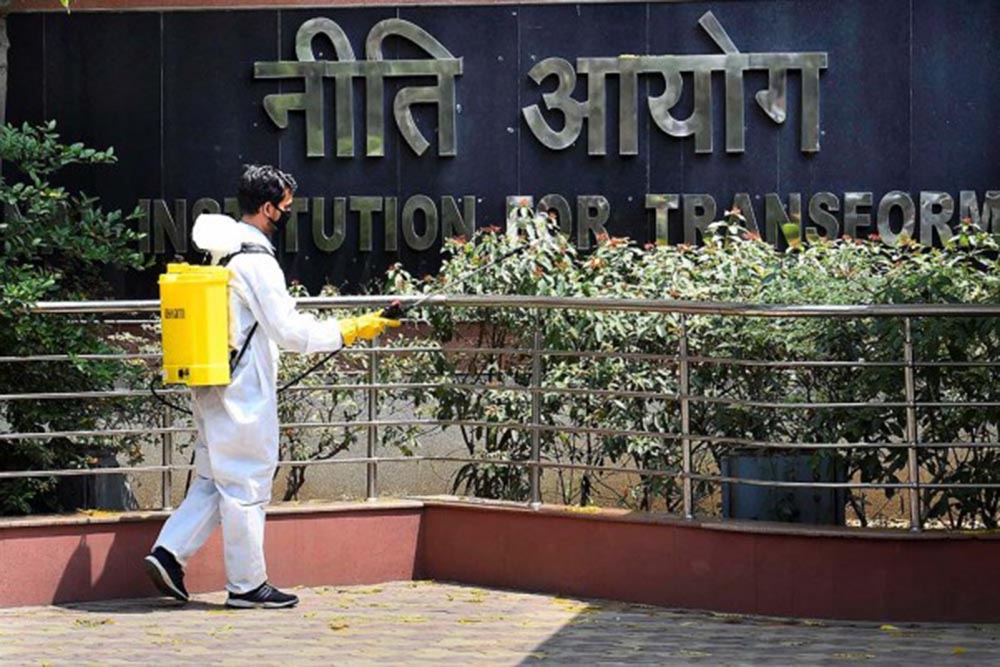
By Dr. Jaijit Bhattacharya
Last week, I wrote about the need to flip the benefits delivery system, and to make it citizen-centric rather than department-centric. That essentially mean, that instead of making those who are in need of the benefits run from department to department to find out what their entitlements are, can we flip it to a citizen centric mechanism, wherein the citizen provides her profile in a portal, and all the departments tell her what she is entitled to.
I also argued the significant Political Return on Investment (PROI) that the ruling party will get, if it adopts the above mechanism for benefit distribution.
This week, I attempt to bring out the enormous savings that the government and the economy will make when they adopt such a flipped citizen-centric approach. To begin with, one needs to understand the correct magnitude of leakages happening in benefit delivery. A study commissioned by NITI Aayog to assess DBT (Direct Benefit Transfer into accounts of citizens) in accessing PDS (ration delivery) in three union territories, showed up that 20% beneficiaries reported non-receipt of the DBT as compared to the official 1%. This gap was attributed to a lack of awareness by the beneficiaries and administrative issues. This is a significant gap.
How much does this translate to for a state government? Let us take the example of Uttar Pradesh, a state with a very substantial welfare budget. Last year, Uttar Pradesh had a total welfare budget of about Rs 93,000 crores, with some of the key schemes being scholarships for students (Rs 5,375 cr), Rashtriya Krishi Vikas Yojna for farmers (Rs 892 cr), Crop Insurance for farmers (Rs 450 cr), Ayushman Bharat (Rs 1,298 cr), MNREGA (Rs 3,488 cr), PM Awas Yojna Rural (Rs 6,240), PM Awas Yojna Urban (Rs 5,156) and MDM (Rs 2,275). Out of this entire budget, total DBT (Direct Benefit Transfer) was only for Rs 42,000 cr, as per PRS India.
If the Niti Aayog estimates of non-receipt of DBT is true and can be extrapolated to Uttar Pradesh and to all sectors of Uttar Pradesh benefit distribution, then we have a non-receipt amount of approximately Rs. 8,400 cr. This is only for the DBT component.
The non-DBT component of Rs 51,000 cr is even more leaky. Conservatively, if we extend the same non-receipt figure of 20% to non-DBT as in DBT, we get a non-receipt figure of at least Rs 10,200 cr. This implies of a total non-receipt of benefits of at least Rs 18,600 cr. This is a humungous loss.
If a fraction of this cost of Rs 18,600 cr is invested into creating a benefits delivery system that is citizen centric, or more precisely, family centric, then not only are we able to save a very significant outflow from the exchequer, but also make benefits delivery far more efficient and effective for the 49 million families in Uttar Pradesh, which as we discussed in my previous article, also leads to a Higher Political Return on Investment (PROI).
Therefore, to bring in the required efficiency in the benefits delivery system, a miniscule portion of the welfare budget needs to be allocated to establish, manage, and enhance the capacity in the form of IT solutions, external program management units, and operations. The problem also includes the challenges of managing several legacy databases and IT systems.
India needs to create a 21st-century welfare ecosystem to bring large scale welfare delivery reforms. Perhaps one should involve private sector on an outsourced basis to improve the benefits delivery. We have several examples of transformative changes in G2C (Government to Citizen) services by leveraging private players. Passport, Income Tax Return, PAN card and Aadhar are excellent examples of tremendous increase in efficiencies and effectiveness by involving private players in managing citizen services. For passport systems, TCS not only manages the software but also the front office. Karvy checks the scan copy of address proof when one applies for change in address on Self Service Portal of UIDAI. This model can be replicated for welfare delivery to bring better service experience to citizen while making very substantial savings for the Government.
The establishment cost of such Benefits delivery capabilities can be funded by multi-lateral agencies and can be easily paid back from savings coming out of the efficiencies brought in.
In addition, even though the welfare spend of the government at 1.6% of GDP is high for a low per capita income country like India, a large part of the disadvantaged population remains without adequate social and economic safety net. In the absence of a detailed data-driven analysis while designing the welfare schemes and analysis of the post-disbursement impact, the schemes suffer from inappropriate fund allocation, poor beneficiary identification and measurement of impact created by the scheme. This often leads to either fund underutilization or insufficient funds and wrongly targeted beneficiaries.
A streamlined, benefits delivery system would not only help in reaching out to a larger number of the needy population, but would also help in better conceptualization of the welfare schemes.
This article first appeared in Outlook India, https://www.outlookindia.com/website/story/india-news-the-bonanza-of-a-citizen-centric-benefit-delivery-system/364445